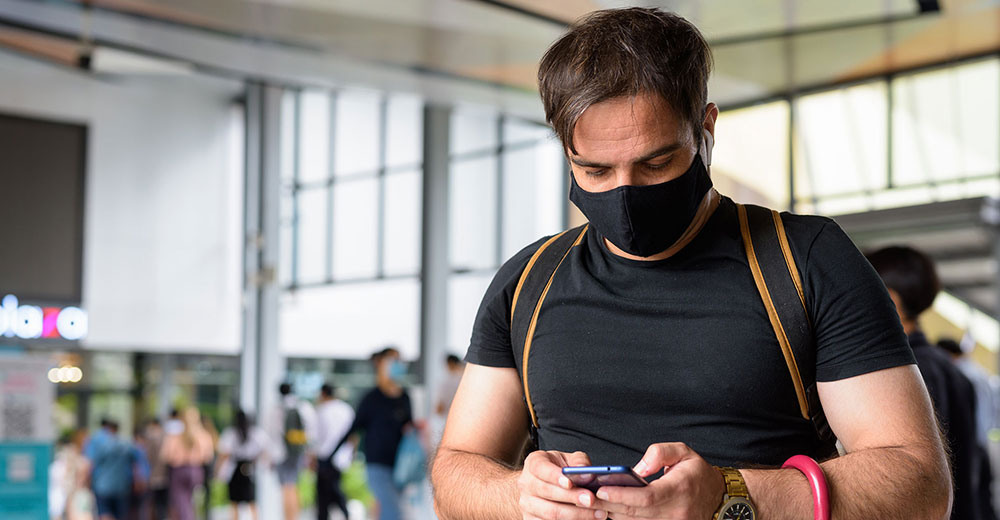You’re driving to work as the sky starts to dump the first snow of the year. Looking down at your dress shoes, you make a mental note to order some sturdier winter boots for the rest of the season. Later that day, you’re comparing two boot brands on your laptop and get distracted when a coworker asks you a question (whoops… no more online shopping at work).
When you get home that evening, you turn on your favorite TV show and grab your tablet to continue browsing boots. Maybe you can find a recommendation on Twitter? Hours later, you power down your tablet with a yawn, telling yourself you’ll look for boots tomorrow. Days later, one snowfall and a pair of squishy dress shoes later, you’re reminded that you need to make a boot purchase, so you jump on your phone to make a quick order.
While this scenario is fictional, it’s easy to relate. This is truly how consumers shop today. In the fast-paced world we live in, we are switching the ways we interact with brands minute-by-minute — from social media to email to online search.
As retailers evolve to stay relevant, it will become critical for brands to embrace omnichannel personalization — or a one-to-one customer experience across all channels and devices. This approach will allow retailers to deliver a consistent message and brand experience to each individual consumer, no matter what channel they’re searching on or what device they’re using.
Why Bother With Omnichannel?
The engagement lift on personalized omnichannel ads is 4.3 times higher than the industry benchmark. In short, consumers are more likely to engage with a brand if the content is personalized to their interests and personality across the various channels they visit.
The world’s largest brand marketers named “personalization” the 2019 word of the year. While many retailers have implemented an omnichannel approach to marketing, hitting their customers and prospects across a variety of channels, some are missing the personalization that makes touchpoints impactful.
The idea of omnichannel personalization in retail isn’t new. In fact, Jeff Bezos predicted the focus 22 years ago when The Washington Post printed an interview with the commentary, “Jeff Bezos believes the Internet store of the future should be able to guess what he wants to buy before he knows himself … . As Bezos sees it, the success of electronic retailers will depend on their ability to analyze each customer’s tastes and create unique experiences from the moment they walk in the virtual door.”
Bezos elaborated on his idea in the interview, saying, “if we have 4.5 million customers, we shouldn’t have one store. We should have 4.5 million stores.” This idea looks pretty similar to the way we look at advertising today, right?
Best Buy jumped on the personalization train several years later as it vied for relevance when Walmart rose as a key player in the electronics retail scene. Best Buy branded its approach to personalization as “customer-centricity,” a term that stuck across the retail industry.
As Best Buy delved into research around true personalization of the customer experience, bundled solutions, and Geek Squad support emerged to meet growing needs.
Nearly 20 years later, not all retailers are all the way there with omnichannel personalization. In fact, based on responses in Salesforce’s “State of Marketing” report, only 28 percent of marketers were completely satisfied with their ability to engage with customers across channels at scale.
On top of that, a whopping 74 percent of marketing leaders said they struggled to scale their personalization efforts in a Gartner poll.
Most retailers have figured out the multichannel approach to consumer engagement, but multichannel and omnichannel are not created equal. All omnichannel experiences will be multichannel, but not all multichannel experiences will be omnichannel.
If omnichannel personalization is so tough for retailers to figure out, why are we still bothering with it? It’s because omnichannel personalization increases conversions with today’s consumers by creating a seamless experience across channels.
Evolving Consumer Behavior
Consumer research and purchasing behavior have evolved. It’s exhausting to keep up when consumers are doing initial research on one channel, sourcing recommendations from friends on another channel, and purchasing on — you guessed it — another channel.
That said, 47 percent of shoppers who engaged with brands on 10 or more channels made purchases from their favorite retailer’s website more often than consumers who engaged across four or fewer channels, according to research from BI Intelligence.
While retailers know they need a unified experience across channels, silos created within brands slow down the process of achieving true omnichannel personalization. We have digital, social, content — and about a thousand other silos within marketing.
While these divisions originally were intended to create granularity, they quickly created a void — and we have yet to recover. We not only siloed channels within the company but also brought outsourced agencies into the mix to handle the functions deemed “not as critical” for in-house control. We must unify these silos to keep up with the demands of today’s consumers.
On top of siloed teams, marketers are working with tech stacks that are so sprawling it’s nearly impossible to create a holistic view of consumers as they travel along the customer journey. The Marketing Technology Landscape Supergraphic (2019) includes 7,040 solutions, up from 6,800 the year before and only 150 in the first iteration of the supergraphic in 2011. That’s a 4,593 percent increase in marketing tools in only nine years.
Building a Personalized Experience Across All Channels
As omnichannel personalization holds its place as the Holy Grail for retail marketers, there are a few ways to get started building a high-quality, one-to-one customer experience across all channels and devices.
- Gauge your needs. To gauge where you’re excelling and lacking when it comes to omnichannel personalization, take time to address three major questions: Is your message relevant when consumers reach the purchase stage? Is your message consistent across various mediums like publisher sites, social media, and email? Is your customer experience seamless for any device or channel? Considering these questions will help you define which areas need the most focus as you move forward in your personalization journey.
- View your campaigns from the customers’ perspective. Sixty-four percent of retailers acknowledge a well-defined cross-channel or omnichannel strategy would drive digital growth, according to a Periscope by McKinsey survey. As retailers move toward a more unified approach to advertising, this consistency rides on their ability to personalize from the customers’ perspective.
- Build the foundation. Unfortunately, retailers can’t just snap their fingers and create the perfect omnichannel strategy. There’s a lot of stage-setting needed to truly optimize the approach — from gathering the right data to understand your customers and putting platforms in place to interpreting that data to create a clear purchase path for your customers to move through.
- Create personalization across the customer journey. On top of addressing various channels, retailers must be cognizant of personalization throughout each step of the customer journey. From awareness and consideration to purchase and upgrade, brands must stay relevant to consumers no matter the stage in which they currently fit.
- Dive into omnichannel personalization. If you’ve made it through steps 1-4, you’re further than the majority of retailers. Now, it’s time to put your omnichannel personalization into play. As you integrate data from first-party data sources and combine it with contextual data to develop a single view of the customer, you can use machine learning to find, scope, and recommend relevant ad content to audience micro-segments. Dynamic creative optimization technology can then deliver personalized creatives and messaging for each ad, engaging customers across various channels with a consistent, relevant message.
Leading brands that put this strategy into play outpace the competition. One large sporting equipment company used omnichannel personalization across display, social, native, and video ads to drive consumer engagement, for example. Its campaigns leveraged weather data to drive activity and products, and they performed three times better than the industry average.
Similarly, a large multinational food, snack, and beverage corporation leverages omnichannel personalization to promote the brand’s regional beverage flavors. Using data on users’ locations and time of day, the brand was able to create 125 unique variants on its ads, personalized by regions, meal moments, images, and copy. It saw four times better engagement than the industry average, along with a 26 percent decrease in viewable impression cost on desktop and an 11 percent reduction on mobile.
Excellence in product quality, attentiveness to customer service, and competitiveness of pricing are important factors, but they are not enough to reach today’s consumers. Delivering the right message at the right time to the right person is critical, and retailers can’t tell their relevant stories without personalization across various channels. Personalized ads always beat out non-personalized ads — there’s just no question about it.















































Our web agency have been providing ecommerce development services since 2013. So, let me make few comments. It isn’t one of real scenarios. First, you need to separate passive search and active search. For example, the man forgot about boots. But, he saw ad when he opened Facebook. Ad offer boots and discounts. It is 70-80% that he will buy these boots. Unfortunately, in reality, we face more complex scenario than we can image.